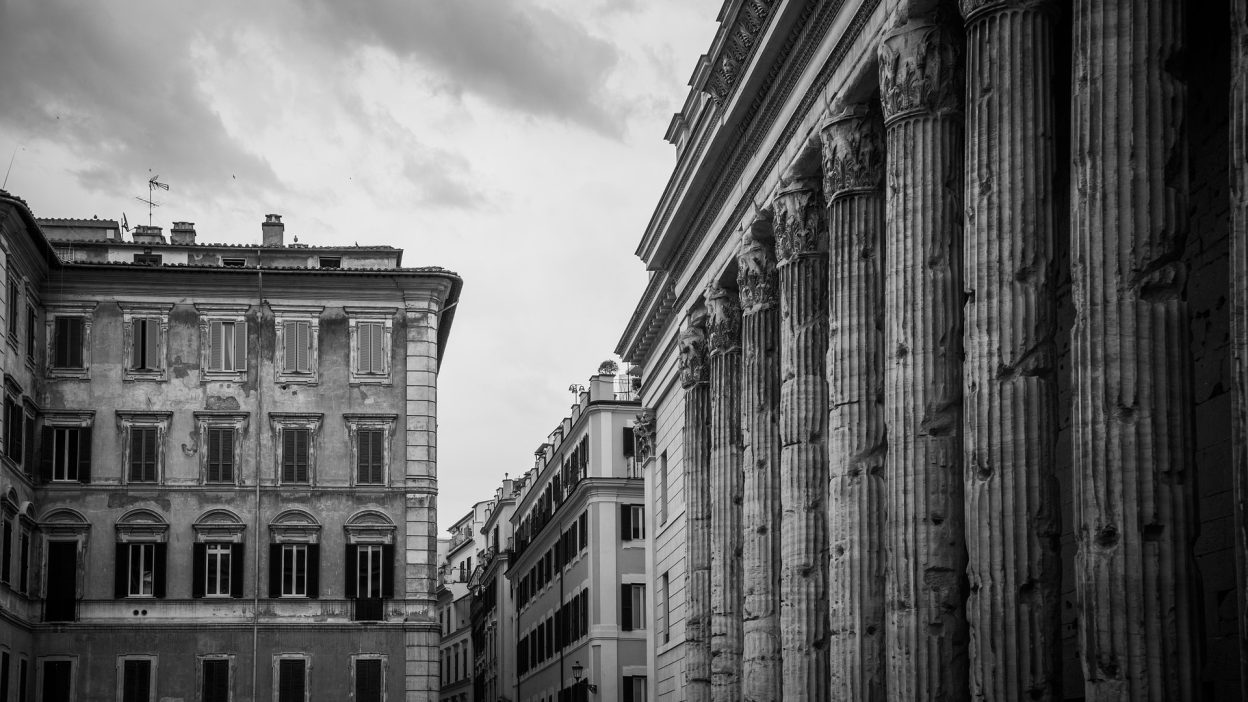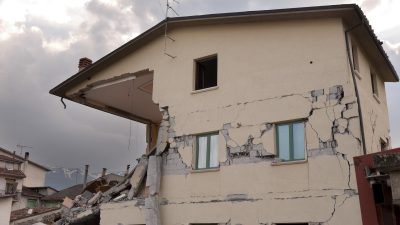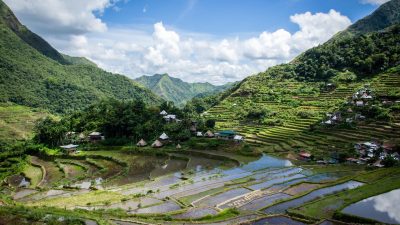The catastrophic disaster that redefined the holy roman empire
1. A Storm Unlike Any Other: The Great Flood of 1287
On the night of 14 December 1287, an unimaginable catastrophe unfolded as a monstrous storm surge battered the coastline of the Holy Roman Empire, leading to one of the deadliest floods in European history. Known as St. Lucia’s Flood, this disaster struck with unparalleled ferocity, submerging vast lands under water, destroying entire settlements, and permanently altering the geography of the region.
The storm coincided with the feast day of Saint Lucia, hence its name. What made this disaster particularly devastating was the combination of raging winds, storm surges, and collapsing dikes, which proved utterly incapable of holding back the North Sea’s fury. The flood not only wiped out thousands of lives but also transformed coastal landscapes, carving new inlets and reshaping rivers. The aftermath left a lasting impact, with survivors forced to adapt to an entirely altered environment.
2. The Holy Roman Empire’s Nightmare: A Nation Overwhelmed
The Holy Roman Empire, stretching across modern-day Germany, the Netherlands, and parts of Northern Europe, found itself in the grip of utter devastation. The regions of Frisia and the Zuiderzee suffered the worst consequences, as the storm surge permanently broke through dikes, leading to widespread flooding. Entire towns were swallowed by the sea, and communities were torn apart by the sheer force of the disaster.
For medieval societies, already struggling with rudimentary infrastructure, the flood was nothing short of apocalyptic. Farmers saw their lands submerged, leaving them without food or income. Traders lost vital ports, crippling commerce and economic stability. The flood’s impact extended far beyond just the immediate death toll—it led to widespread famine, displacement, and economic collapse. The social order was upended as thousands were forced to flee their ancestral homes, seeking refuge in higher lands.
3. The Grim Toll: Death, Destruction, and Unimaginable Loss
The St. Lucia Flood of 1287 was one of the deadliest floods in recorded history. The scale of human and material loss was staggering:
- Estimated Death Toll: Around 50,000 to 80,000 people perished, making it one of the worst natural disasters of medieval Europe. The lack of proper documentation means the exact number may have been even higher.
- Entire Villages Vanished: Dozens of settlements were completely obliterated, leaving no trace of their existence. Many towns that thrived before the flood were permanently abandoned.
- The Creation of the Zuiderzee: The flood’s powerful surge reshaped the Dutch coastline, turning what was once a freshwater lake into an open sea, later influencing centuries of Dutch land reclamation efforts.
- Livestock and Crops Wiped Out: Thousands of cattle, sheep, and horses drowned, and farmlands were rendered useless, leading to severe food shortages in the years that followed.
4. The Storm That Shaped Geography: How the Flood Altered the Land
The 1287 flood was not just a human catastrophe—it was an environmental cataclysm that permanently changed the landscape of Northern Europe. One of its most significant consequences was the creation of the Zuiderzee, a vast inland sea that would later play a crucial role in Dutch history. Before the flood, the Zuiderzee had been a large freshwater lake, but when the storm breached the dikes, saltwater from the North Sea rushed in, transforming it into a tidal estuary.
This change had profound consequences for the Holy Roman Empire’s maritime economy. Previously protected lands were now open to the sea, making agriculture difficult and forcing communities to adapt to a life dependent on fishing and trade. The Dutch, known for their resilience, later embarked on massive land reclamation projects centuries later, eventually converting much of the Zuiderzee into what is today the IJsselmeer.
5. Political and Social Upheaval: A Kingdom in Crisis
The Holy Roman Empire, already politically fragmented, struggled to cope with the scale of the disaster. With so many lives lost and infrastructure completely destroyed, local rulers were overwhelmed. The immediate response was chaotic and disorganised, as medieval governments lacked the resources and coordination necessary to mount large-scale rescue operations.
The flood led to widespread displacement, forcing thousands of people to seek refuge in neighbouring regions. This mass movement of people put immense pressure on local economies, leading to conflicts over land, resources, and food. The disaster also sparked debates about the need for better flood defences, though at the time, such improvements were difficult to achieve with the available technology.
6. The Economic Collapse: Trade, Agriculture, and Survival in Ruins
The St. Lucia Flood didn’t just claim lives—it crippled the economy. The Holy Roman Empire relied heavily on agriculture and trade, both of which suffered immensely in the wake of the disaster.
- Agricultural Lands Destroyed: Farmers who had worked on their lands for generations found them completely submerged or covered in salt, rendering them useless for crops.
- Trade Disruptions: The flood decimated key trading routes and ports, leading to a severe decline in commerce. Many merchants lost their goods, and entire trading networks were severed.
- Food Shortages and Famine: With fields destroyed and livestock lost, famine quickly followed, leading to increased mortality rates in the years after the flood.
7. Survivors’ Struggle: How the People Rebuilt Their Lives
The aftermath of the St. Lucia Flood saw survivors facing unimaginable challenges:
- Rebuilding Settlements: Many survivors had to relocate to higher ground, abandoning their ancestral villages.
- New Livelihoods: With farmlands destroyed, people turned to fishing and maritime trade for survival.
- Adaptation to Future Floods: The disaster reinforced the need for stronger dike systems, though meaningful advancements would take centuries.
8. The Forgotten Disaster: Why History Overlooked St. Lucia’s Flood
Despite its devastating impact, the St. Lucia Flood is often overshadowed by other historical events. This is partly due to the lack of medieval records, as well as the tendency of later historians to focus on wars and political events rather than natural disasters. However, for those who lived through it, the flood was a life-altering catastrophe that reshaped the world they knew.
9. Lessons from the Past: How This Disaster Shaped Modern Flood Defences
The St. Lucia Flood serves as a stark reminder of nature’s power and the importance of flood management. In modern times, countries like the Netherlands have taken extreme measures to prevent such disasters, constructing massive dikes, storm surge barriers, and flood control systems. Without these advancements, floods like St. Lucia’s could still claim thousands of lives today.
10. Could It Happen Again? The Ever-Present Threat of Storm Surges
With rising sea levels and climate change, the possibility of similar catastrophic floods remains a serious threat. Coastal cities across the world face increasing risks of storm surges, making it imperative for governments to invest in climate resilience and flood protection infrastructure. The tragedy of 1287 should serve as a warning—if we do not learn from the past, history may repeat itself.
FAQs
1. How many people died in the St. Lucia Flood of 1287?
Estimates suggest that between 50,000 and 80,000 people lost their lives, making it one of the deadliest floods in European history.
2. What caused the St. Lucia Flood?
The flood was triggered by a violent storm surge from the North Sea, which overwhelmed dikes and flooded large areas of the Holy Roman Empire.
3. How did the flood change the geography of Europe?
The disaster led to the formation of the Zuiderzee, permanently altering the Dutch coastline and reshaping trade routes.
4. Did the Holy Roman Empire recover from the flood?
Yes, but recovery took decades. The economy suffered severe losses, and many communities were permanently displaced.5. Can a similar flood happen today?
Yes, rising sea levels and climate change make storm surges a growing threat to coastal cities worldwide.




